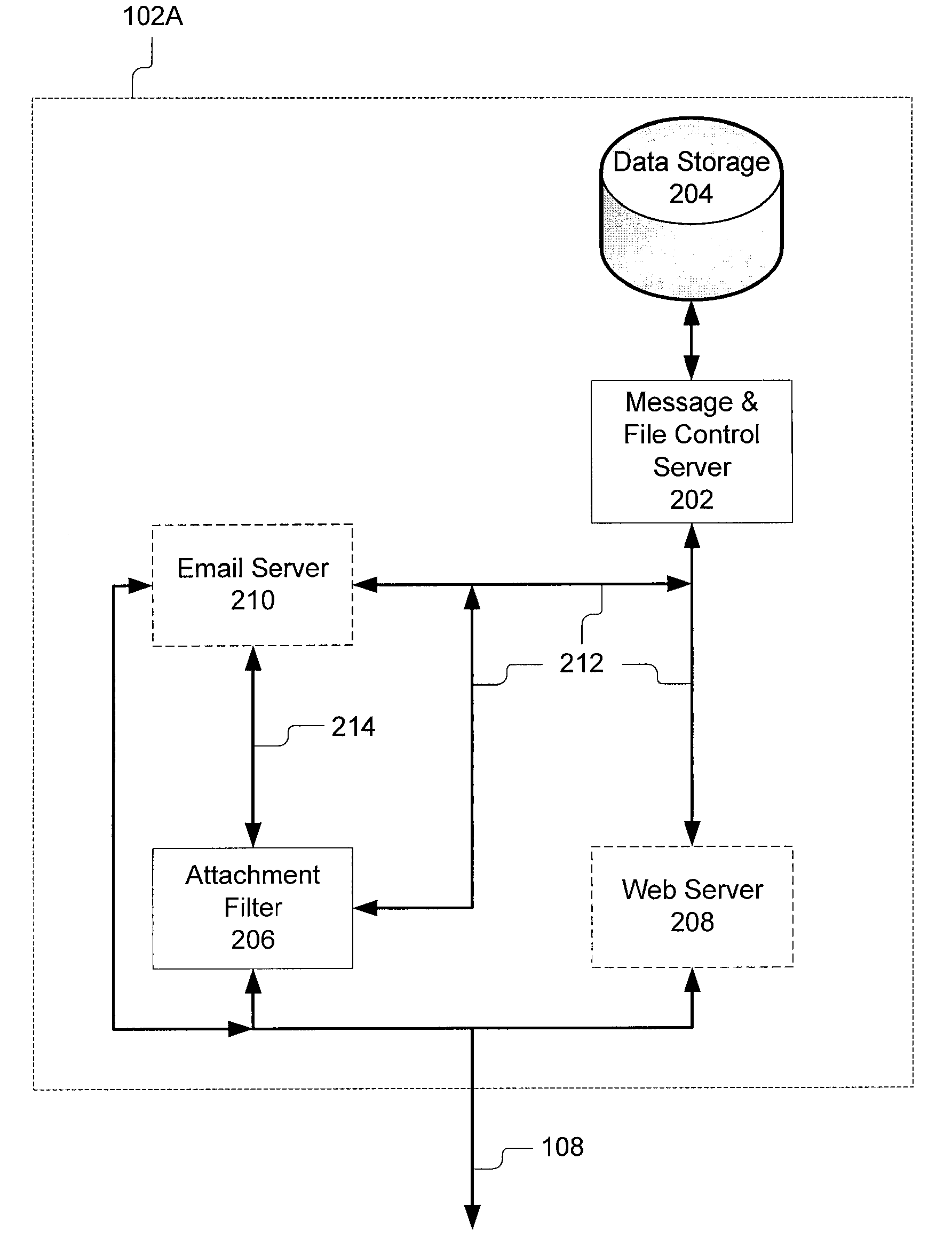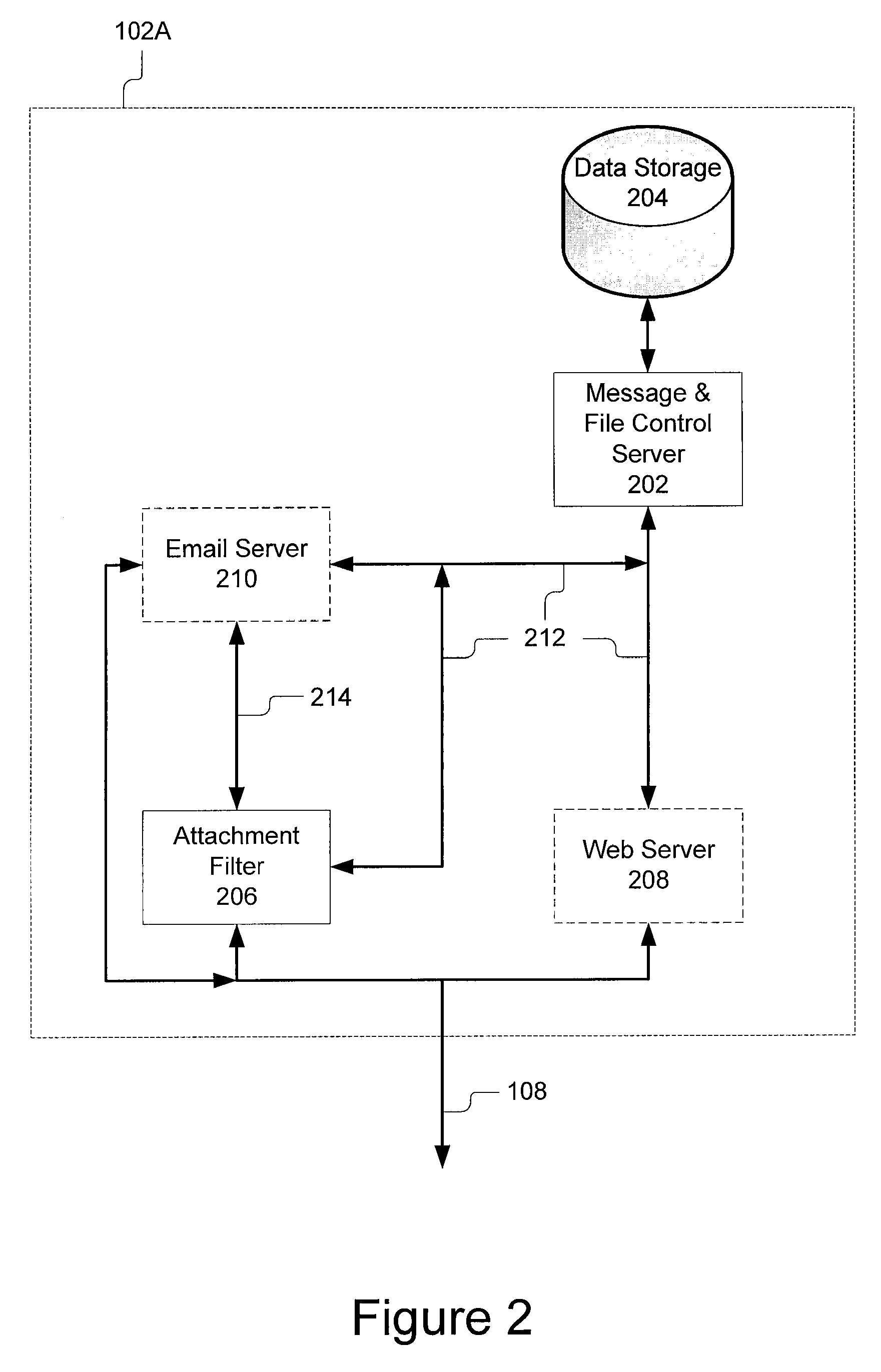System and method for data transport
a data transmission and data technology, applied in the field of systems and methods for sending and receiving files, can solve problems such as multiple accounts and passwords, aging technologies have a number of limitations and problems, and current email and web systems, so as to reduce the size of images and fine-tune the behavior of attachment filtering
- Summary
- Abstract
- Description
- Claims
- Application Information
AI Technical Summary
Problems solved by technology
Method used
Image
Examples
first embodiment
[0050] Referring now to FIG. 2, a block diagram of the IMFT system 102A according to the present invention is shown in more detail. The IMFT system 102A comprises the message & file control server 202, the data storage 204, the attachment filter 206, a web server 208 and an email server 210. Although shown in block diagram form, those skilled in the art will recognize that these components may be integrated into a single device.
[0051] The message & file control server 202 is an apparatus for sending emails and sending documents to other devices; for storing uploaded files, and metadata files and content files generated from original emails; for generating user interfaces for accessing and interacting with the IMFT system 102A; and for controlling access to the IMFT system 102A. The message & file control server 202 includes a number of modules for performing these functions as will be described below in more detail with reference to FIGS. 4 and 5. The message & file control server 2...
second embodiment
[0056] Referring now to FIG. 3, a block diagram of the IMFT system 102B according to the present invention is shown in more detail. In this embodiment, the IMFT system 102B comprises a file store 302 with IMFT files, a database 304 with IMFT tables, a file store adapter 306, filters 308, a portlet container 310 with at least one IMFT portlet, an email server 312, a mail adapter 314, and a web server 316 with IMFT pages. As can be seen, the file store 302 and the database 304 collectively are the data storage 204, and the file store adapter 306, the mail adapter 314 and the portlet container 310 are collectively part of the message & file control server 202. The present invention advantageously provides a way for users to interact with their files in a web browser using the web server 316 and email server 312.
[0057] As noted above for web server 208, the web server 316 is similarly a conventional type. The web server 316 includes IMFT pages. The IMFT pages provide the web-based user ...
PUM
 Login to View More
Login to View More Abstract
Description
Claims
Application Information
 Login to View More
Login to View More - R&D
- Intellectual Property
- Life Sciences
- Materials
- Tech Scout
- Unparalleled Data Quality
- Higher Quality Content
- 60% Fewer Hallucinations
Browse by: Latest US Patents, China's latest patents, Technical Efficacy Thesaurus, Application Domain, Technology Topic, Popular Technical Reports.
© 2025 PatSnap. All rights reserved.Legal|Privacy policy|Modern Slavery Act Transparency Statement|Sitemap|About US| Contact US: help@patsnap.com



